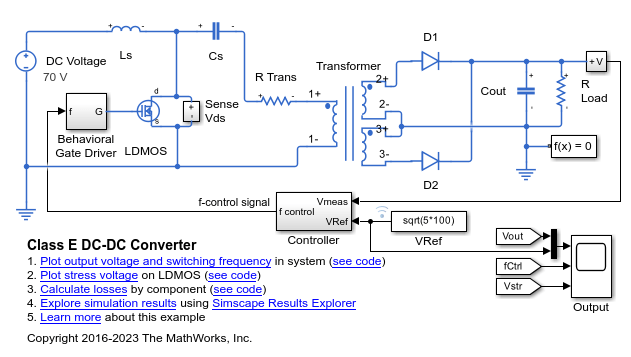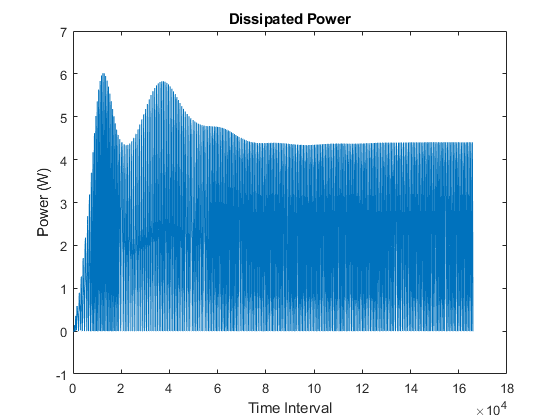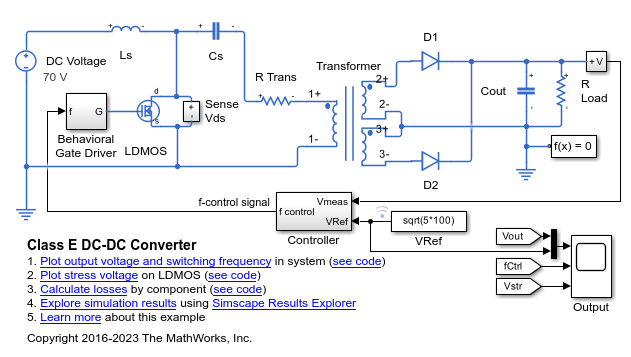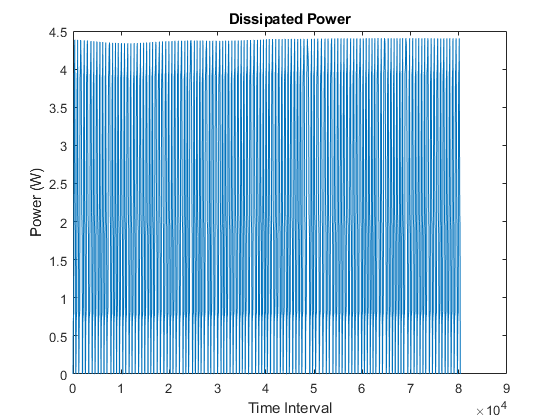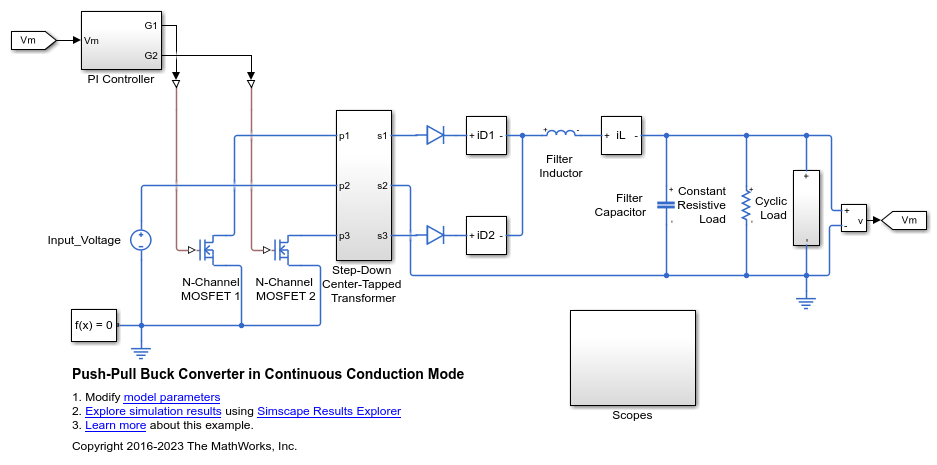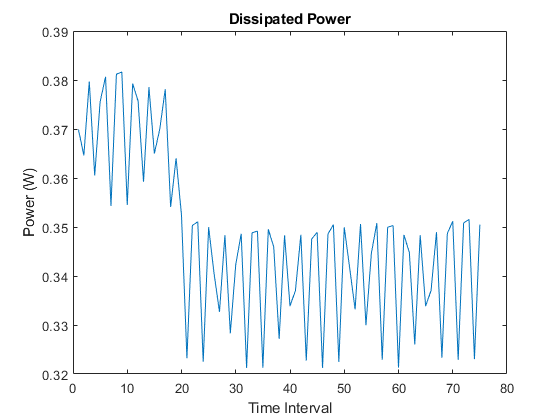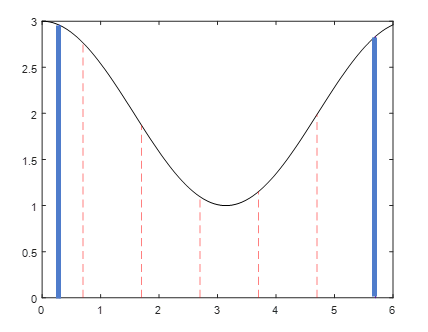ee_getPowerLossTimeSeries
Calculate dissipated power losses and switching losses, and return time series data
Syntax
Description
lossesCell = ee_getPowerLossTimeSeries(node)
Before you call this function, you must have the simulation log variable in your current workspace. Create the simulation log variable by simulating the model with data logging turned on, or load a previously saved variable from a file.
The ee_getPowerLossTimeSeries function calculates dissipated power
losses for each block that has a power_dissipated variable. All blocks in
the Semiconductor Devices library, as well as some other blocks, have an internal variable
called power_dissipated, which represents the instantaneous power
dissipated by the block. Some blocks have more than one power_dissipated
variable, depending on their configuration. For example, the N-Channel MOSFET
block has separate power_dissipated logging nodes for the MOSFET, the
gate resistor, and for the source and drain resistors if they have nonzero resistance
values. The function sums all these losses and provides the power loss value for all of the
blocks as functions of time.
Note
The power_dissipated internal variable does not report dynamic
losses incurred from semiconductor switching or magnetic hysteresis.
Three different variables, lastTurnOnLoss,
lastTurnOffLoss, and lastReverseRecoveryLoss
report the switching losses.
Switching losses are losses associated with the transition of the semiconductor switch
from its on-state to its off-state and viceversa, and also with the energy dissipated during
a reverse recovery event. They are frequency dependent. The
ee_getPowerLossTimeSeries function returns the switching losses at
each switching event and expresses them in joules.
These blocks in the Semiconductors & Converters library support the calculation of switching losses and reverse recovery losses, when applicable:
If node is the name of the simulation log variable, then the table
contains the data for all the blocks in the model that dissipate power (that is, contain at
least one power_dissipated variable). If node is the
name of a node in the simulation data tree, then the table contains the data only for the
blocks within that node.
lossesCell = ee_getPowerLossTimeSeries(node,startTime,endTime)startTime to endTime. If
startTime is equal to endTime, the interval is
effectively zero and the function returns the instantaneous power for the time step that
occurs at that moment. If you omit these two input arguments, the function returns data over
the whole simulation time.
lossesCell = ee_getPowerLossTimeSeries(node,startTime,...
endTime,intervalWidth)startTime to endTime, averaged over the time
intervalWidth. If you omit the intervalWidth, or
set it to 0, the function returns the instantaneous data, without averaging. If you omit all
three optional arguments, the function returns the instantaneous data over the whole
simulation time.
[
calculates dissipated power losses for blocks in a model, based on logged simulation data,
and returns the time series data, lossesCell, switchingLosses] = ee_getPowerLossTimeSeries(node)lossesCell, for each block and
a cell array, switchingLosses, with the switching losses of each
device.
If there are no switching losses appear, the switchingLosses
output is an empty cell array.
Examples
Input Arguments
Output Arguments
Version History
Introduced in R2017a
